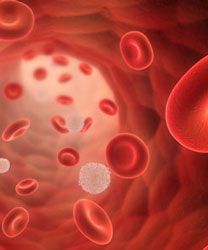Crizotinib Induces High Response Rates in Pediatric ALCL, IMT
In a small study of pediatric patients with relapsed/refractory ALK-positive anaplastic large cell lymphoma, treatment with 165 mg/m2 of crizotinib (Xalkori) was associated with an overall response rate of 83%
mcl

In a small study of pediatric patients with relapsed/refractory ALK-positive anaplastic large cell lymphoma (ALCL), treatment with 165 mg/m2 of crizotinib (Xalkori) was associated with an overall response rate (ORR) of 83%. ORR was 90% in patients treated with 280 mg/m2.
ORR was 86% for patients in the study with inflammatory myofibroblastic tumors (IMTs). Patients in this cohort were treated with doses of 100 mg/m2, 165 mg/m2, or 280 mg/m2. Results for these patients were presented as a pooled cohort because toxicity and response were similar across dose levels.
Median duration of therapy was 2.8 years in the 165 mg/m2 ALCL cohort, compared with roughly 5 months in the 280 mg/m2 ALCL cohort, and 1.6 years for patients with IMT.
Twenty-six patients with ALCL and 14 with IMT enrolled in the 2-stage study from September 2009 to October 2015. Due to a lack of openings in the phase I trial, patients with recurrent ALCL or unresectable IMT could enroll at 1 dose level below that actively accruing to the phase I trial or at the starting dose level if dose escalation had not yet occurred. Enrollment of patients with IMT could continue during the phase II trial for patients with ALCL.
Sixteen patients (62%) with ALCL enrolled in the phase I study. Six of these patients were treated at a dose of 165 mg/m2 and 10 were treated at the recommended phase II dose (RP2D) of 280 mg/m2. All 10 patients treated at the RP2D in phase I of the study were included in the phase II study. The remaining 10 patients with ALCL were specifically enrolled in the phase II expansion cohort and treated at the 280 mg/m2 dose. Patients in the 280 mg/m2 cohort tended to be older (median age, 12.2 years vs 5.9 years)
Eight patients (57%) with IMT enrolled in the dose-escalation portion of this study. One was treated with a 100 mg/m2 dose, 1 with 165 mg/m2 dose, and 6 were treated at the 280 mg/m2 dose. The remaining 6 patients enrolled in the phase II study and were treated at the 280 mg/m2 dose. The median age of patients with IMT was 7.0 years.
All patients with ALCL and 86% of those with IMT underwent at least 1 prior therapy. All patients with ALCL received at least 1 course of chemotherapy, compared with 29% of the patients with IMT. Surgery was the most common prior therapy for patients with IMT.
There was complete concordance between central review and site evaluation of response for 20 of 26 patients with ALCL. Three patients with a site determination of partial response were determined to be complete responses by central review; 2 patients with complete responses by site determination had a partial reaction by central review. One patient with a site-determined partial response had stable disease on central review.
Twelve patients in the IMT group had complete or partial response.
The research team collected quantitative reverse transcriptase polymerase chain reaction (qRT-PCR) data from 282 samples (21 pretherapy bone marrow aspirates, 25 pretherapy peripheral blood samples, 2 post-therapy bone marrow samples, and 234 post-therapy peripheral blood samples collected monthly).
Of 18 pre-enrollment paired samples, 5 patients had no quantifiable levels of NPM-ALK in either the bone marrow or peripheral blood. In 13 of 18 paired samples, researchers observed quantifiable NPM-ALK in both bone marrow and peripheral blood. Investigators noted that levels of NPM-ALK in bone marrow were lower than that observed in peripheral blood in 10 of 13 paired samples.
For 24 patients, qRT-PCR levels of NPM-ALK were available at day 15 of cycle 1 and either day 1 of cycle 2 or once during each subsequent cycle. Twenty-three patients showed a decrease in the first month that continued over the subsequent cycle.
All patients with ALCL assigned to the 280 mg/m2 cohort experienced at least 1 grade 3/4 adverse event (AE) compared with 83% of patients in the 165 mg/m2 group, and 71% of patients with IMT. Grade 3/4 AEs that were possibly, probably, or definitely related to the study drug occurred in 33%, 85%, and 57% of the study cohorts, respectively.
The most common grade 3/4 drug-related AE was a decrease in neutrophil count. At least 1 neutrophil count decrease was observed in 33% of patients in the 165 mg/m2 ALCL group, 70% of patients in the 280 mg/m2 ALCL cohort, and 43% of patients with IMT.
Mossé YP, Voss SD, Lim MS, et al. Targeting ALK with crizotinib in pediatric anaplastic large cell lymphoma and inflammatory myofibroblastic tumor: A Children’s Oncology Group study [published online August 8, 2017]. J Clin Oncol. doi: 10.1200/JCO.2017.73.4830.



